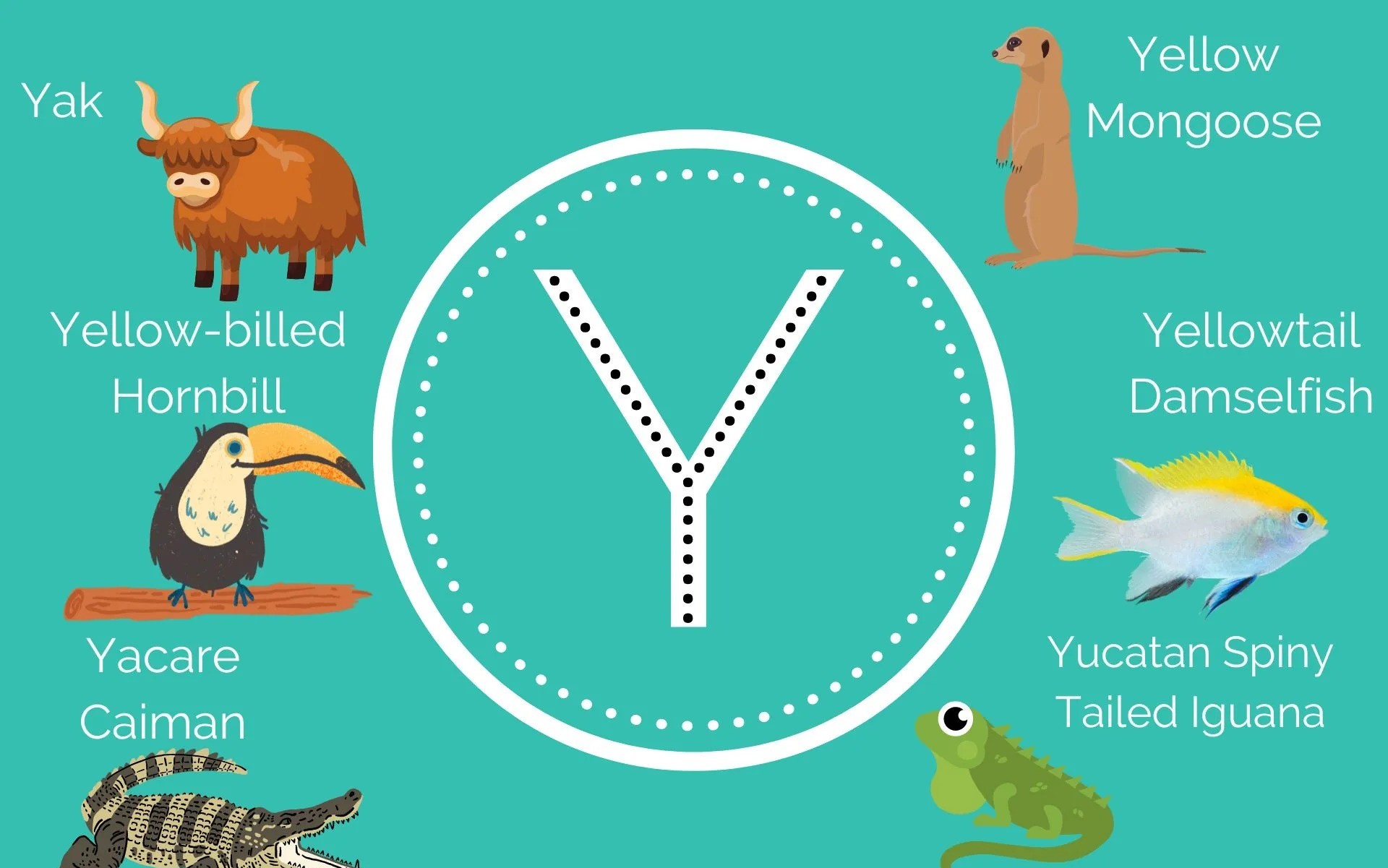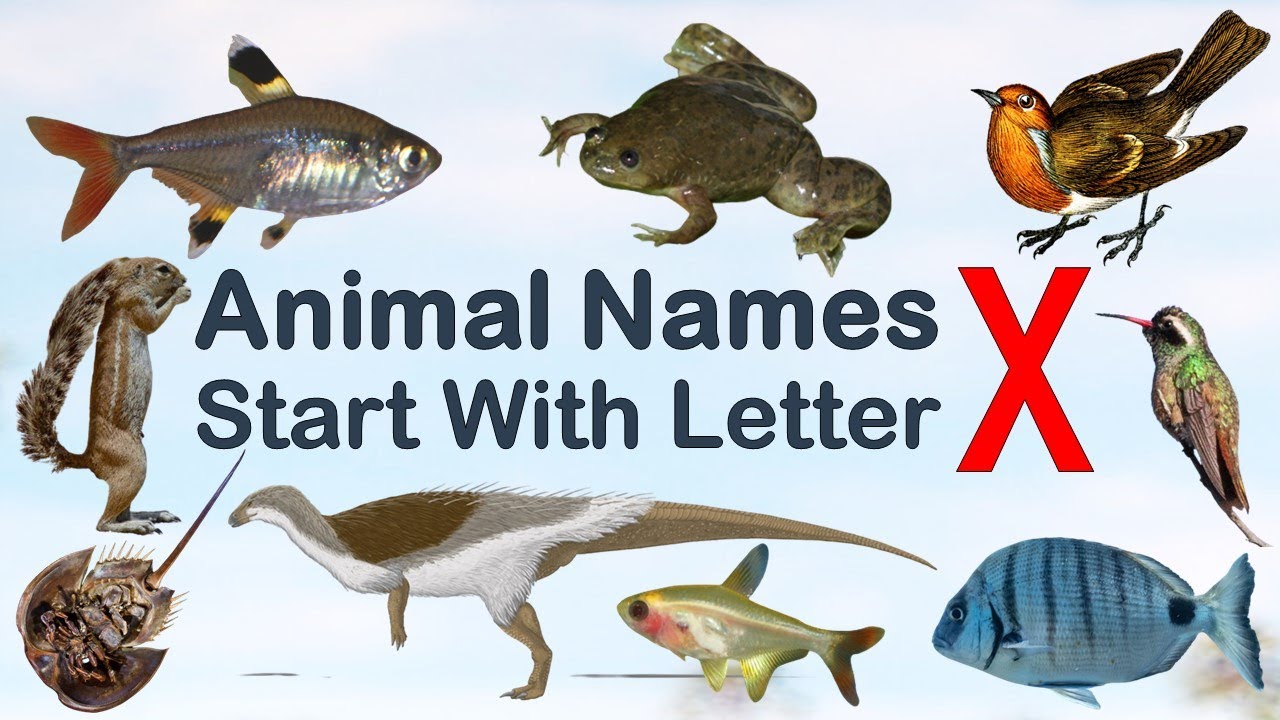Home>Pets & Animals>10 Amazing Animals That Start With The Letter ‘Y’


Pets & Animals
10 Amazing Animals That Start With The Letter ‘Y’
Published: January 29, 2024
Discover 10 fascinating animals that begin with the letter 'Y' in this comprehensive list. From yaks to yellow-bellied marmots, explore the diverse world of Pets & Animals.
(Many of the links in this article redirect to a specific reviewed product. Your purchase of these products through affiliate links helps to generate commission for Noodls.com, at no extra cost. Learn more)
Table of Contents
Yak
The majestic Yak, often referred to as the "boat of the Himalayas," is a long-haired bovid found in the mountainous regions of Central Asia, including the Tibetan Plateau. Renowned for its remarkable adaptability to high altitudes and harsh climates, the Yak serves as a vital resource for the local communities, providing milk, meat, fiber, and transportation.
Unique Characteristics
Yaks are characterized by their robust build, with sturdy legs and a thick, shaggy coat that offers insulation against the extreme cold. Their distinctive hump between the shoulders is a reservoir of fat that provides energy during times of scarcity. Additionally, their long, sweeping horns and large, cloven hooves enable them to navigate the rugged terrain with ease.
Importance to Local Communities
In the remote regions of the Himalayas, Yaks are integral to the livelihood of indigenous peoples. The Yak's milk is a staple in the production of butter, cheese, and yogurt, while its meat serves as a significant source of protein. Furthermore, the Yak's coarse outer hair and soft inner wool, known as yak wool, are utilized in crafting durable textiles, including clothing and tents. As pack animals, Yaks transport goods across treacherous mountain paths, playing a crucial role in trade and transportation.
Conservation Efforts
Despite their resilience, Yaks face environmental and human-induced challenges, including overgrazing, habitat loss, and climate change. To safeguard these iconic creatures, conservation initiatives are being implemented to promote sustainable grazing practices, preserve their natural habitats, and raise awareness about the importance of Yak conservation.
Cultural Significance
Beyond their practical contributions, Yaks hold profound cultural significance in the traditions and rituals of Himalayan communities. They are revered as symbols of strength, endurance, and prosperity, often featuring prominently in local folklore, art, and spiritual ceremonies.
In essence, the Yak stands as a symbol of resilience and resourcefulness in the face of formidable natural conditions, embodying the spirit of survival amidst the breathtaking yet unforgiving landscapes of the Himalayas.
Read more: 10 Amazing Animals With 3-Letter Names!
Yellow Baboon
The Yellow Baboon, scientifically known as Papio cynocephalus, is a captivating primate species native to the African continent. With its distinctive yellow-tinged coat and robust build, the Yellow Baboon is an iconic figure in the savannas and arid regions of eastern Africa. These social and highly adaptable creatures are renowned for their complex social structures, remarkable intelligence, and intriguing behavioral patterns.
Physical Characteristics
Yellow Baboons are characterized by their striking yellow or light brown fur, which becomes more vibrant as they mature. Their expressive faces feature hairless, dark-colored muzzles and prominent, dog-like noses, lending them an air of both power and wisdom. Adult males can weigh up to 30 kilograms, while females are slightly smaller, typically weighing around 20 kilograms. Their long, dog-like snouts and sharp, elongated canines are indicative of their omnivorous diet, which includes fruits, seeds, insects, and small vertebrates.
Social Structure and Behavior
These primates thrive in complex social groups, exhibiting a hierarchical structure led by dominant males. The troop's social dynamics are marked by intricate communication through vocalizations, facial expressions, and grooming rituals. The cohesive nature of their groups fosters cooperation and mutual protection, enabling them to thrive in a variety of habitats, from open grasslands to dense woodlands.
Habitat and Distribution
Found predominantly in the savannas and open woodlands of sub-Saharan Africa, Yellow Baboons are remarkably adaptable, thriving in a range of environments, from semi-desert regions to mountainous terrain. Their ability to adjust to varying ecological conditions has contributed to their widespread distribution across countries such as Kenya, Tanzania, and Zambia.
Conservation Status
Despite their adaptability, Yellow Baboons face threats from habitat loss, human-wildlife conflict, and poaching. Conservation efforts are crucial to safeguard their populations and preserve their natural habitats. By promoting sustainable land use practices and raising awareness about the importance of coexisting with wildlife, conservationists aim to mitigate the pressures faced by these captivating primates.
Significance in Ecosystems
Yellow Baboons play a pivotal role in their ecosystems as both consumers and seed dispersers. Their foraging activities contribute to the maintenance of vegetation and the dispersion of seeds, thereby influencing the ecological balance of their habitats.
In essence, the Yellow Baboon's resilience, social complexity, and ecological significance underscore its importance as a captivating and integral species within the African savannas, highlighting the intricate web of life that thrives across the continent.
Yellow Mongoose
The Yellow Mongoose, scientifically known as Cynictis penicillata, is a fascinating small mammal native to the arid regions of southern Africa. This captivating creature, also referred to as the red meerkat due to its resemblance to the meerkat species, is renowned for its striking yellowish-brown fur and intriguing behaviors. Let's delve into the captivating world of the Yellow Mongoose and explore its unique characteristics and ecological significance.
Physical Characteristics
The Yellow Mongoose boasts a sleek, slender build, with a distinctive yellowish-brown coat that provides excellent camouflage in its arid habitat. Its fur exhibits a striking contrast against its dark, mask-like facial markings, creating a visually captivating appearance. With a body length of approximately 48 centimeters and a long, bushy tail measuring around 25 centimeters, this species showcases remarkable agility and swift movements, allowing it to navigate its environment with ease. Additionally, the Yellow Mongoose is equipped with sharp claws and powerful jaws, enabling it to excavate burrows and forage for its preferred diet of insects, small reptiles, and fruits.
Behavioral Adaptations
The Yellow Mongoose is a diurnal and highly social species, often observed foraging in groups or pairs. These captivating creatures exhibit remarkable communication skills, utilizing a diverse repertoire of vocalizations, including chirps, chatters, and alarm calls, to convey information within their social groups and warn of potential threats. Furthermore, their cooperative nature is exemplified through communal burrow systems, where they seek refuge and rear their young, fostering a sense of unity and mutual protection within their close-knit communities.
Ecological Significance
Within its arid ecosystem, the Yellow Mongoose plays a crucial role as a predator of insects and small vertebrates, contributing to the regulation of prey populations and the maintenance of ecological balance. Additionally, their foraging activities and burrowing behavior influence soil aeration and seed dispersal, exerting a subtle yet significant impact on the dynamics of their habitat. As an integral component of the food web, the Yellow Mongoose contributes to the intricate web of interactions that sustains the biodiversity of its arid environment.
Conservation Status
While the Yellow Mongoose is currently classified as a species of Least Concern by the International Union for Conservation of Nature (IUCN), it faces potential threats from habitat degradation, fragmentation, and predation by domestic animals. Conservation efforts are essential to mitigate these challenges and ensure the long-term survival of this captivating species. By promoting sustainable land management practices and raising awareness about the ecological importance of the Yellow Mongoose, conservationists strive to safeguard its natural habitat and preserve the intricate balance of the arid ecosystems it inhabits.
In essence, the Yellow Mongoose stands as a captivating emblem of resilience and adaptability within the arid landscapes of southern Africa, underscoring the intricate connections between species and their environments.
Yellow-Eyed Penguin
The Yellow-Eyed Penguin, scientifically known as Megadyptes antipodes, stands as a captivating emblem of New Zealand's unique wildlife. Endemic to the coastal regions of the South Island and nearby offshore islands, this enchanting species holds the distinction of being one of the rarest penguins in the world. Renowned for its striking yellow eye band and distinctively pale yellow head, the Yellow-Eyed Penguin captivates the hearts of wildlife enthusiasts and conservationists alike.
Unique Physical Features
Distinguished by its vibrant yellow eye band, which contrasts dramatically against its dark plumage, the Yellow-Eyed Penguin possesses a singularly striking appearance. With an average height of approximately 65 to 75 centimeters, it stands as one of the tallest penguin species. Its sleek, streamlined body and flippers enable graceful underwater navigation, while its distinctive yellow head feathers and subtle, yet captivating, facial markings contribute to its visual allure.
Ecological Significance
Within its coastal habitat, the Yellow-Eyed Penguin plays a pivotal role in marine ecosystems as a predator of fish and squid, contributing to the regulation of local prey populations. Additionally, its nesting behaviors and foraging activities influence coastal dynamics, fostering a delicate balance within the interconnected web of marine life. As a flagship species for conservation, the Yellow-Eyed Penguin serves as an ambassador for the protection of New Zealand's coastal ecosystems and the diverse array of species that rely upon them.
Conservation Challenges
Despite its ecological significance, the Yellow-Eyed Penguin faces a myriad of challenges, including habitat degradation, predation, and human disturbances. Anthropogenic factors, such as habitat encroachment and disturbance from recreational activities, pose significant threats to the species' breeding success and overall population viability. Furthermore, the impact of climate change on marine ecosystems and food availability presents additional challenges for the long-term survival of this iconic species.
Conservation Efforts
Dedicated conservation initiatives are essential for the preservation of the Yellow-Eyed Penguin. Through habitat restoration, predator control, and public awareness programs, conservationists strive to mitigate the threats facing this captivating species. Furthermore, ongoing research and monitoring efforts provide valuable insights into the ecological dynamics and conservation needs of the Yellow-Eyed Penguin, informing targeted interventions to safeguard its future.
Cultural Significance
In addition to its ecological importance, the Yellow-Eyed Penguin holds cultural significance as a cherished symbol of New Zealand's natural heritage. Its presence in indigenous folklore and contemporary conservation efforts reflects its profound impact on the cultural identity of the region, inspiring admiration and fostering a sense of stewardship for the country's unique wildlife.
In essence, the Yellow-Eyed Penguin stands as a captivating embodiment of New Zealand's natural splendor, underscoring the intricate connections between wildlife, ecosystems, and human stewardship. Its conservation serves as a testament to the collective efforts to protect and preserve the irreplaceable biodiversity of our planet.
Yellowfin Tuna
The Yellowfin Tuna, scientifically known as Thunnus albacares, is a highly esteemed and widely distributed species of tuna that inhabits tropical and subtropical waters around the world. Renowned for its remarkable speed, agility, and culinary desirability, the Yellowfin Tuna holds a significant place in both marine ecosystems and global fisheries.
Physical Characteristics
Yellowfin Tuna are characterized by their streamlined, torpedo-shaped bodies, which are adorned with vibrant yellow finlets and a lustrous metallic blue dorsal surface. Their distinctive coloring, featuring a yellow dorsal fin and a silver-white underside, contributes to their visual allure and aids in camouflage within the sunlit waters of their oceanic habitats. With a maximum length exceeding 2 meters and a weight that can surpass 200 kilograms, Yellowfin Tuna exemplify the impressive size and strength that define the species.
Ecological Role
In their marine habitats, Yellowfin Tuna play a pivotal role as apex predators, preying on a diverse array of fish, squid, and crustaceans. Their voracious feeding habits contribute to the regulation of prey populations, thereby influencing the dynamics of marine food webs. Furthermore, as highly migratory species, Yellowfin Tuna traverse vast distances across oceanic expanses, serving as vital components of transboundary marine ecosystems and linking disparate regions through their movements.
Importance to Fisheries
The Yellowfin Tuna holds immense economic and cultural significance as a prized catch in commercial and recreational fisheries. Its succulent, flavorful flesh is highly sought after in global markets, where it is utilized in a myriad of culinary applications, including sashimi, sushi, and grilled dishes. The species' desirability has led to intensive fishing pressure, prompting the implementation of sustainable management practices to ensure the long-term viability of Yellowfin Tuna populations and the livelihoods of fishing communities.
Conservation Challenges
Despite their commercial value, Yellowfin Tuna face a range of conservation challenges, including overfishing, bycatch in industrial fishing operations, and habitat degradation. Sustainable management strategies, such as catch quotas, gear modifications, and marine protected areas, are essential for mitigating these threats and safeguarding the species' ecological integrity.
Future Outlook
As global awareness of sustainable fisheries practices continues to grow, concerted efforts to conserve and manage Yellowfin Tuna populations offer hope for their long-term sustainability. By fostering international cooperation, implementing science-based management measures, and promoting responsible consumption, stakeholders can work together to ensure the enduring presence of the captivating and ecologically significant Yellowfin Tuna in our oceans.
In essence, the Yellowfin Tuna's ecological importance and cultural resonance underscore the imperative of balancing conservation efforts with the responsible utilization of marine resources, paving the way for a future where this iconic species thrives in harmony with marine ecosystems and human societies.
Yellowtail Snapper
The Yellowtail Snapper, scientifically known as Ocyurus chrysurus, is a captivating and highly sought-after species inhabiting the vibrant coral reefs of the Western Atlantic Ocean, particularly the warm waters of the Caribbean and the Florida Keys. Renowned for its striking golden lateral line and vibrant yellow tail, this species embodies the allure of tropical marine environments and holds significant ecological and cultural importance.
Physical Characteristics
The Yellowtail Snapper showcases a sleek, elongated body adorned with a distinctively golden lateral line that extends from its gills to the tail, accentuating its visual appeal. Its vibrant yellow tail, from which it derives its name, serves as a defining feature, adding a splash of color to the iridescent blue and silver hues that adorn its body. With an average length of 14 to 18 inches and a weight ranging from 2 to 3 pounds, the Yellowtail Snapper exudes elegance and agility, reflecting its adeptness in navigating the intricate coral reef ecosystems that it calls home.
Ecological Role
Within the dynamic marine ecosystems of the Caribbean and the Western Atlantic, the Yellowtail Snapper assumes a pivotal ecological role as a mesopredator, preying on small fish, crustaceans, and mollusks. Its foraging activities contribute to the regulation of prey populations, influencing the delicate balance of reef communities. Furthermore, as a prey species for larger predators such as groupers and sharks, the Yellowtail Snapper forms an integral link in the intricate food web of coral reefs, exemplifying the interconnectedness of marine life.
Conservation Significance
Despite its ecological importance and cultural resonance, the Yellowtail Snapper faces conservation challenges stemming from overfishing, habitat degradation, and climate-related stressors. Sustainable fisheries management, including size and catch limits, as well as the establishment of marine protected areas, are essential for safeguarding the species' populations and preserving the integrity of coral reef ecosystems. Additionally, public awareness and community engagement play a vital role in fostering stewardship and promoting responsible fishing practices, ensuring the enduring presence of this captivating species for future generations to cherish.
Cultural Relevance
The Yellowtail Snapper holds cultural significance in the culinary traditions and recreational pursuits of coastal communities, where it is celebrated for its delectable flesh and revered as a prized catch among anglers. Its culinary versatility, from grilled fillets to ceviche, underscores its appeal as a culinary delight, enriching the gastronomic experiences of seafood enthusiasts. Furthermore, the species' presence in art, folklore, and local traditions reflects its enduring influence on the cultural identity of coastal regions, weaving a captivating narrative that intertwines with the vibrant tapestry of marine life.
In essence, the Yellowtail Snapper's captivating beauty, ecological significance, and cultural resonance underscore its enduring presence as a cherished emblem of tropical marine environments, inspiring admiration and fostering a sense of stewardship for the vibrant coral reefs that it inhabits.
Yucatan Squirrel
The Yucatan Squirrel, scientifically known as Sciurus yucatanensis, emerges as a captivating arboreal inhabitant of the lush tropical forests and mangrove ecosystems of the Yucatan Peninsula in Mexico. This charismatic species, belonging to the diverse family of Sciuridae, captivates the imagination with its endearing behaviors, distinctive physical attributes, and vital ecological role within its biodiverse habitat.
Distinguished by its striking coat of fur, the Yucatan Squirrel boasts a rich blend of colors, featuring hues of reddish-brown, gray, and ochre, creating a visually captivating ensemble that harmonizes with the verdant canopy of its arboreal domain. Its bushy tail, often adorned with a hint of rust or ochre, serves as a multifunctional tool, aiding in balance during agile leaps and providing warmth during restful moments within the embrace of tree hollows. With a graceful and nimble demeanor, the Yucatan Squirrel navigates the intricate network of branches and foliage with remarkable agility, embodying the essence of arboreal adaptation and natural grace.
Amidst the verdant tapestry of the Yucatan Peninsula's tropical forests, the Yucatan Squirrel assumes a pivotal ecological role as a seed disperser, contributing to the regeneration and diversity of plant species within its habitat. Its foraging activities, characterized by the consumption of fruits, seeds, and nuts, facilitate the dispersal of seeds across the forest floor, nurturing the cycle of regeneration and fostering the resilience of the diverse flora that thrives within the region. Furthermore, as a prey species for avian predators and carnivorous mammals, the Yucatan Squirrel forms an integral component of the intricate food web, exemplifying the interconnectedness of species and the delicate balance that sustains the biodiversity of its habitat.
While the Yucatan Squirrel's populations are currently stable, the species faces potential threats from habitat loss, fragmentation, and human disturbances. Sustainable land management practices, coupled with conservation initiatives focused on preserving the integrity of tropical forest ecosystems, are essential for safeguarding the long-term viability of this captivating species. By fostering awareness and stewardship among local communities and visitors to the Yucatan Peninsula, conservation efforts aim to ensure the enduring presence of the Yucatan Squirrel, preserving its vital ecological contributions and enriching the tapestry of life within the region.
In essence, the Yucatan Squirrel stands as a captivating emblem of arboreal vitality and ecological interconnectedness, weaving its narrative within the vibrant tapestry of the Yucatan Peninsula's tropical forests and mangrove ecosystems. Its enduring presence underscores the imperative of harmonizing human activities with the preservation of biodiverse habitats, fostering a future where the Yucatan Squirrel thrives as a cherished symbol of natural splendor and ecological resilience.
Yuma Myotis
The Yuma Myotis, scientifically known as Myotis yumanensis, emerges as a captivating and enigmatic species within the diverse tapestry of North American bat fauna. This captivating bat species, belonging to the Vespertilionidae family, is renowned for its remarkable ecological adaptations, vital contributions to insect control, and intriguing roosting behaviors within its arid and semi-arid habitats.
Distinguished by its diminutive size and distinctive physical features, the Yuma Myotis exudes an understated elegance, with a wingspan averaging around 9 to 11 inches and a weight ranging from 5 to 10 grams. Its fur, characterized by shades of brown and gray, contributes to its cryptic presence within the rugged landscapes it inhabits. The species' elongated ears and fluttering, agile flight patterns reflect its adeptness in navigating the intricate nocturnal realm, where it forages for insects, including moths, beetles, and flies, contributing to the regulation of insect populations within its ecosystem.
Amidst the arid and semi-arid habitats of western North America, the Yuma Myotis assumes a pivotal ecological role as a voracious insectivore, preying on a diverse array of nocturnal insects. Its foraging activities not only aid in controlling insect populations but also contribute to the intricate web of interactions within its ecosystem, influencing the dynamics of nocturnal communities. Furthermore, the species' roosting behaviors, characterized by the utilization of rock crevices, caves, and man-made structures, underscore its adaptability and resilience within its arid environments, reflecting the intricate balance of survival strategies honed through evolutionary time.
While the Yuma Myotis' populations are currently stable, the species faces potential threats from habitat loss, disturbance of roosting sites, and the impacts of climate change. Conservation efforts aimed at preserving its roosting habitats, raising awareness about the species' ecological significance, and fostering stewardship among local communities are essential for ensuring the enduring presence of this captivating species. By promoting responsible land use practices and advocating for the protection of roosting sites, conservation initiatives strive to safeguard the Yuma Myotis and preserve its vital contributions to the ecological tapestry of western North America.
In essence, the Yuma Myotis stands as a captivating emblem of nocturnal vitality and ecological interconnectedness, weaving its narrative within the rugged landscapes of western North America. Its enduring presence underscores the imperative of harmonizing human activities with the preservation of vital habitats, fostering a future where the Yuma Myotis thrives as a cherished symbol of natural splendor and ecological resilience.
Yunnan Snub-Nosed Monkey
The Yunnan snub-nosed monkey, scientifically known as Rhinopithecus bieti, stands as a captivating emblem of China's rich biodiversity and the intricate web of life that thrives within its mountainous landscapes. Endemic to the rugged and biodiverse habitats of the eastern Himalayas, including the forests of southwestern China, this enigmatic primate species captivates the imagination with its distinctive physical attributes, complex social structures, and vital ecological contributions.
Distinguished by its striking appearance, the Yunnan snub-nosed monkey showcases a unique blend of features, including a prominent upturned nose, a dense fur coat ranging from dark brown to black, and a mesmerizing contrast between its dark fur and the vibrant hues of its face. With a robust build and a graceful, arboreal lifestyle, these captivating primates navigate the challenging terrain of their mountainous habitats with agility and finesse, reflecting their adaptation to the rugged landscapes they call home.
Amidst the lush and biodiverse forests of southwestern China, the Yunnan snub-nosed monkey assumes a pivotal ecological role as a seed disperser and herbivore, contributing to the dynamics of its forest ecosystems. Their foraging activities, characterized by the consumption of a diverse array of plant species, influence the regeneration and diversity of forest flora, thereby shaping the intricate balance of their habitat. Furthermore, their social dynamics, marked by complex hierarchies and cooperative behaviors, foster resilience and adaptability within their communities, reflecting the interconnectedness of social structures and ecological functions.
While the Yunnan snub-nosed monkey's populations are currently stable, the species faces potential threats from habitat loss, fragmentation, and human disturbances. Conservation efforts aimed at preserving their forest habitats, mitigating human-wildlife conflicts, and fostering stewardship among local communities are essential for ensuring the enduring presence of this captivating species. By promoting sustainable land use practices, advocating for the protection of their habitats, and raising awareness about the species' ecological significance, conservation initiatives strive to safeguard the Yunnan snub-nosed monkey and preserve its vital contributions to the biodiversity of southwestern China.
In essence, the Yunnan snub-nosed monkey stands as a captivating emblem of arboreal vitality and ecological interconnectedness, weaving its narrative within the biodiverse landscapes of southwestern China. Its enduring presence underscores the imperative of harmonizing human activities with the preservation of vital habitats, fostering a future where the Yunnan snub-nosed monkey thrives as a cherished symbol of natural splendor and ecological resilience.
Yunnan Red-Headed Vulture
The Yunnan Red-Headed Vulture, scientifically known as Sarcogyps calvus, emerges as a captivating emblem of China's diverse avian fauna and the intricate web of life that thrives within its expansive landscapes. Endemic to the rugged and biodiverse habitats of the eastern Himalayas, including the Yunnan province in southwestern China, this enigmatic bird of prey captivates the imagination with its distinctive physical attributes, vital ecological contributions, and cultural significance within the region.
Distinguished by its remarkable appearance, the Yunnan Red-Headed Vulture showcases a striking contrast between its deep red, featherless head and neck, and the dark plumage that adorns its robust, soaring frame. With a wingspan that can exceed 2.5 meters, these captivating raptors navigate the thermals and updrafts of their mountainous habitats with grace and prowess, reflecting their adaptation to the rugged landscapes they call home.
Amidst the lush and biodiverse ecosystems of the Yunnan province, the Yunnan Red-Headed Vulture assumes a pivotal ecological role as a scavenger, contributing to the regulation of carrion and the maintenance of ecosystem health. Their foraging activities, characterized by the consumption of carrion from a diverse array of terrestrial and aquatic sources, contribute to the recycling of nutrients and the reduction of potential disease vectors, thereby shaping the intricate balance of their habitat. Furthermore, their presence as apex scavengers reflects their influence on the dynamics of ecological communities, underscoring their significance within the intricate web of life.
While the Yunnan Red-Headed Vulture's populations are currently stable, the species faces potential threats from habitat loss, poisoning from ingesting contaminated carrion, and human disturbances. Conservation efforts aimed at preserving their foraging habitats, mitigating the impact of anthropogenic activities, and fostering stewardship among local communities are essential for ensuring the enduring presence of this captivating species. By promoting responsible land use practices, advocating for the protection of their foraging areas, and raising awareness about the species' ecological significance, conservation initiatives strive to safeguard the Yunnan Red-Headed Vulture and preserve its vital contributions to the biodiversity of the Yunnan province.
In essence, the Yunnan Red-Headed Vulture stands as a captivating emblem of aerial vitality and ecological interconnectedness, weaving its narrative within the biodiverse landscapes of the Yunnan province. Its enduring presence underscores the imperative of harmonizing human activities with the preservation of vital habitats, fostering a future where the Yunnan Red-Headed Vulture thrives as a cherished symbol of natural splendor and ecological resilience.







